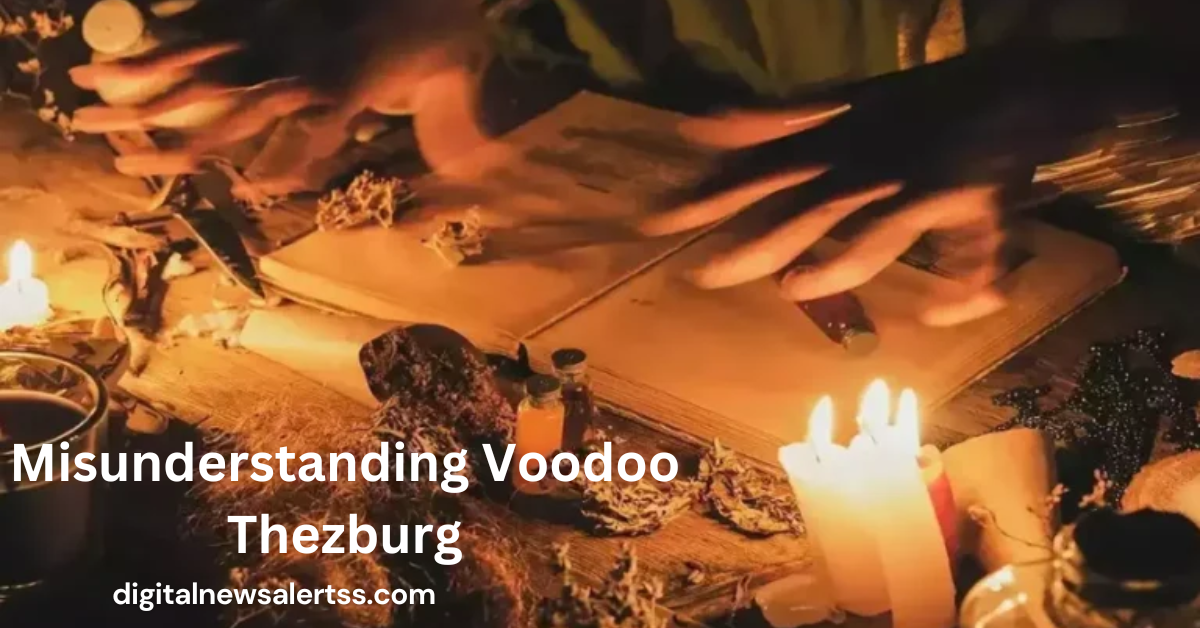Voodoo in Thezburg has long been a subject of fascination, fear, and misconception. This ancient spiritual practice, deeply rooted in the cultural fabric of Thezburg, has often been misrepresented in popular media and misunderstood by outsiders. In this comprehensive article, we’ll explore the truth behind Voodoo Thezburg, dispelling common myths and shedding light on its rich history, beliefs, and practices.
The Origins and History of Voodoo Thezburg
Voodoo Thezburg traces its roots back to the early 18th century when African slaves were brought to the region. These enslaved individuals carried with them their traditional beliefs and practices, which over time blended with elements of Christianity and indigenous Thezburg spirituality.
The word “Voodoo” itself comes from the West African Fon language, meaning “spirit” or “deity.” In Thezburg, Voodoo evolved into a unique form, incorporating local customs and beliefs to create a distinct spiritual tradition.
Key Beliefs and Practices of Voodoo Thezburg
At its core, Voodoo Thezburg is a monotheistic religion that believes in one supreme creator god, often called Bondye. However, practitioners also honor and work with various spirits known as Loa, who serve as intermediaries between humans and the divine.
Some key aspects of Voodoo Thezburg include:
1. Ancestor Veneration: Honoring and seeking guidance from deceased family members and community elders.
2. Rituals and Ceremonies: Elaborate ceremonies involving music, dance, and offerings to connect with the spiritual realm.
3. Herbal Medicine: The use of natural remedies and plant-based treatments for physical and spiritual healing.
4. Spiritual Possession: The belief that Loa can temporarily possess practitioners during rituals, allowing direct communication with the spirit world.
Common About Misconceptions Voodoo Thezburg
Misunderstanding Voodoo Thezburg has led to numerous myths and stereotypes. Let’s address some of the most common misconceptions:
Myth 1: Voodoo Thezburg is evil or based on black magic
Reality: Voodoo Thezburg is a legitimate spiritual practice focused on healing, community, and connection with the divine. Like any religion, it can be used for both positive and negative purposes, but its core teachings emphasize balance and harmony.
Myth 2: Voodoo dolls are used to harm people
Reality: While small figurines called “poppets” are sometimes used in Voodoo Thezburg, their purpose is typically for healing or protection, not harm. The Hollywood image of pins stuck in dolls to cause pain is a misrepresentation.
Myth 3: Voodoo Thezburg practitioners engage in animal sacrifice
Reality: While some Voodoo traditions do involve animal offerings, this is not universal in Voodoo Thezburg. Many practitioners focus on bloodless offerings such as fruits, flowers, and candles.
Myth 4: Voodoo Thezburg is a form of witchcraft
Reality: Voodoo Thezburg is a full-fledged religion with its own theology, ethics, and practices. While it does involve spiritual work, it is not synonymous with witchcraft or sorcery.
The Role of Voodoo in Thezburg Society
Despite years of misunderstanding and persecution, Voodoo has played a significant role in shaping Thezburg’s culture and society. It has been a source of strength, resilience, and community cohesion, particularly during times of hardship.
Some ways Voodoo influences Thezburg society include:
1. Cultural Preservation: Voodoo rituals and practices have helped preserve African cultural elements in Thezburg.
2. Social Support: Voodoo communities often provide important social and emotional support networks.
3. Traditional Medicine: Voodoo healers continue to play a role in healthcare, especially in rural areas.
4. Artistic Expression: Voodoo has inspired numerous forms of art, music, and dance in Thezburg.
Voodoo Thezburg in the Modern World
As Thezburg modernizes, Voodoo practices are evolving to meet contemporary needs. Many younger practitioners are finding ways to integrate traditional beliefs with modern lifestyles.
Some current trends in Voodoo Thezburg include:
1. Online Communities: Practitioners are connecting through social media and online forums to share knowledge and support.
2. Eco-Friendly Practices: There’s a growing emphasis on environmentally sustainable rituals and offerings.
3. Interfaith Dialogue: Some Voodoo leaders are engaging in discussions with other faith communities to promote understanding and cooperation.
4. Academic Study: Increased scholarly interest in Voodoo Thezburg is helping to document and preserve its traditions.
Challenges Facing Voodoo Thezburg Today
Despite progress, Voodoo Thezburg still faces several challenges in the modern world:
1. Ongoing Stigma: Misunderstanding and negative stereotypes continue to affect practitioners.
2. Legal Issues: In some areas, certain Voodoo practices may conflict with local laws or regulations.
3. Commercialization: The commodification of Voodoo symbols and practices for tourism can lead to misrepresentation.
4. Loss of Traditional Knowledge: As older generations pass away, there’s a risk of losing important oral traditions and practices.
Understanding Voodoo Thezburg Rituals
To truly appreciate Voodoo Thezburg, it’s important to understand its rituals and ceremonies. These sacred practices are at the heart of the religion, serving as a means to connect with the spirit world and seek divine guidance.
Key elements of Voodoo Thezburg rituals include:
1. Altars: Sacred spaces adorned with symbols, offerings, and images of Loa and ancestors.
2. Drumming and Dance: Rhythmic music and movement are used to induce trance states and invite spirit possession.
3. Offerings: Food, drink, and other items are presented to honor and please the Loa.
4. Veve: Intricate symbols drawn on the ground with cornmeal or ash to represent different Loa.
5. Prayer: Invocations and supplications are an essential part of most rituals.
The Loa: Understanding Voodoo Thezburg Spirits
The Loa are central figures in Voodoo Thezburg cosmology. These powerful spirits each have their own personalities, domains of influence, and preferred offerings. Some of the most important Loa include:
1. Papa Legba: The gatekeeper between the human and spirit worlds.
2. Erzulie Freda: The Loa of love, beauty, and luxury.
3. Ogou: The warrior spirit associated with iron, fire, and politics.
4. Damballa: The serpent deity representing wisdom and creation.
5. Baron Samedi: The Loa of death and resurrection.
Understanding these spirits and their roles helps to provide context for many Voodoo Thezburg practices and beliefs.
Voodoo Thezburg and Healing Practices
One of the most important aspects of Voodoo Thezburg is its approach to healing. Practitioners believe in a holistic view of health that encompasses physical, mental, and spiritual well-being.
Voodoo healing practices may include:
1. Herbal Remedies: Using plants and natural substances for medicinal purposes.
2. Spiritual Cleansing: Rituals designed to remove negative energies or influences.
3. Divination: Using various methods to diagnose problems and determine appropriate treatments.
4. Energy Work: Manipulating spiritual energies to promote healing.
5. Counseling: Many Voodoo priests and priestesses also serve as community counselors and advisors.
The Ethics and Morality of Voodoo Thezburg
Contrary to popular misconceptions, Voodoo Thezburg has a strong ethical framework. Practitioners are expected to live in harmony with nature, respect their ancestors, and contribute positively to their communities.
Some key ethical principles in Voodoo Thezburg include:
1. Reciprocity: The belief that what one puts out into the world will return to them.
2. Community Service: Many practitioners engage in charitable work as part of their spiritual practice.
3. Respect for Nature: Voodoo Thezburg emphasizes living in balance with the natural world.
4. Honesty and Integrity: Lying and deceit are considered spiritually harmful.
5. Personal Responsibility: Practitioners are encouraged to take responsibility for their actions and their spiritual growth.
Voodoo Thezburg and Gender Roles
In Voodoo Thezburg, both men and women can serve as spiritual leaders. Many of the most respected Voodoo priests and priestesses, known as Houngans and Mambos respectively, are women.
The religion also recognizes the fluid nature of gender in the spirit world. Many Loa can manifest as either male or female, challenging traditional gender norms.
The Influence of Voodoo Thezburg on Popular Culture
Despite misunderstandings, Voodoo Thezburg has had a significant impact on popular culture, influencing:
1. Music: From traditional Thezburg rhythms to modern jazz and rock.
2. Literature: Inspiring countless novels, poems, and plays.
3. Film and Television: Often misrepresented, but increasingly depicted more accurately in recent years.
4. Fashion: Voodoo symbols and aesthetics have influenced clothing and jewelry design.
5. Tourism: Voodoo-themed tours and experiences are popular among visitors to Thezburg.
The Future of Voodoo Thezburg
As we look to the future, Voodoo Thezburg faces both challenges and opportunities. Increased global awareness and academic interest may help to dispel misconceptions and preserve traditions. However, the religion must also adapt to changing societal norms and technological advancements.
Some potential future developments include:
1. Digital Preservation: Using technology to record and share oral traditions and rituals.
2. Eco-Voodoo: Emphasizing environmentally friendly practices and nature conservation.
3. Interfaith Collaboration: Increased dialogue and cooperation with other religious traditions.
4. Modernized Rituals: Adapting traditional practices for urban and diaspora communities.
5. Academic Recognition: Growing acceptance of Voodoo Thezburg as a subject of serious scholarly study.
Conclusion: Embracing Understanding and Respect
Misunderstanding Voodoo Thezburg has led to centuries of fear, discrimination, and missed opportunities for cultural exchange. By taking the time to learn about this rich spiritual tradition, we can move beyond stereotypes and appreciate the depth and complexity of Voodoo Thezburg.
As we’ve explored in this article, Voodoo Thezburg is far more than the Hollywood caricatures or sensationalized media portrayals. It is a living, breathing spiritual tradition that continues to provide meaning, community, and connection for its practitioners.
By approaching Voodoo Thezburg with an open mind and a willingness to learn, we can foster greater understanding and respect between cultures. In doing so, we enrich our own worldview and contribute to a more inclusive and harmonious global society.
FAQs About Misunderstanding Voodoo Thezburg
Is Voodoo Thezburg the same as Haitian Vodou or Louisiana Voodoo?
While they share some common roots, Voodoo Thezburg is a distinct tradition with its own unique practices and beliefs shaped by the specific history and culture of Thezburg.
Do Voodoo Thezburg practitioners worship the devil?
No, Voodoo Thezburg is not devil worship. It is a monotheistic religion that believes in one supreme creator god and works with various spirits as intermediaries.
Can anyone practice Voodoo Thezburg?
While Voodoo Thezburg is open to all, it is a serious spiritual practice that requires dedication and study. Many practitioners are born into Voodoo families and learn from a young age.
Is it safe to attend a Voodoo Thezburg ceremony as an outsider?
Generally, yes, if you are invited and approach with respect. However, it’s important to follow the guidance of the ceremony leaders and not interfere with or disrupt the proceedings.
Does Voodoo Thezburg use curses or black magic?
While some practitioners may engage in what’s known as “left-hand” practices, this is not representative of Voodoo Thezburg as a whole, which focuses on healing and positive spiritual work.
How can I learn more about Voodoo Thezburg?
The best way to learn is from practitioners themselves. Look for reputable books written by Voodoo scholars or practitioners, or consider taking a respectful and guided tour in Thezburg.
Is Voodoo Thezburg legal?
In most places, the practice of Voodoo Thezburg is legal as a form of religious expression. However, specific practices may be regulated, particularly those involving animal offerings.
Can Voodoo Thezburg cure illnesses?
While Voodoo Thezburg includes traditional healing practices, it should not be seen as a replacement for modern medical care. Many practitioners use both traditional and contemporary medicine.
What’s the difference between a Houngan and a Mambo?
A Houngan is a male Voodoo priest, while a Mambo is a female Voodoo priestess. Both can perform similar functions within the religion.
Are Voodoo dolls real?
The concept of “Voodoo dolls” as seen in popular culture is largely a myth. While small figurines called “poppets” may be used in some practices, they are typically for healing or protection, not harm.



